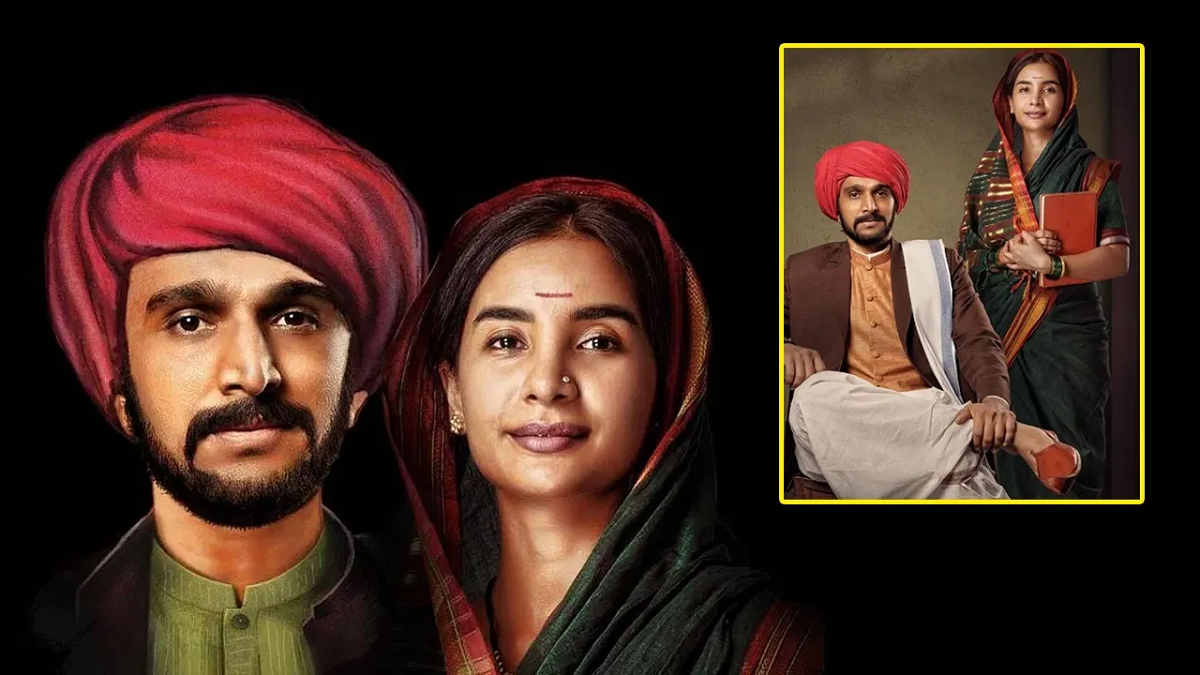The film Phule, directed by Anant Mahadevan, presents the story of the social struggle of 19th-century social reformers Jyotiba Phule and Savitribai Phule. Pratik Gandhi and Patralekha have played the lead roles in the film. The Phule couple, who belonged to the Marathi community, belonged to the backward caste and did many great things to bring the deprived section of society into the mainstream. They made education the most important weapon for the upliftment of Dalits. Thus, Phule is a film whose hero does not belong to the upper caste. If seen, mainstream films usually do not have heroes who come from Dalit or OBC society. Its number is very negligible. In this article, we will also discuss those films.
Generally, watch any mainstream film and you will find titles like Rathore, Chauhan, Pandey, Sharma, Singh, Chaturvedi, Verma, Singhania, Kapoor, Khanna, Srivastava, Malhotra, Vajpayee, Thakur, Lala, Rai Saheb, or Raichand, etc. in front of the names of the heroes. In this sense, Phule becomes a film of a different nature. However, to know how well this film has stood the test of production, direction, and acting, one needs to go to the theatre. It will also be interesting to see how many viewers this film gets, but there is no doubt that Phule has given tough competition to the caste consciousness of mainstream films.
Phule gave a breakthrough to the film industry
It is worth noting that whether it is the country’s electoral politics or the politics of power, Dalits and OBCs are a serious issue on this front. Even in real life, many actors, producers-directors, screenwriters, or technicians in the film industry are from all castes and religions, but when a story is filmed on screen, its main hero is rarely from the Dalit or OBC class, except for some side characters. Why does this happen? Why are the heroes of the stories shown on screen always upper caste? Phule has once again given a breakthrough to the film industry on this basis.
Although many such films have been made in our film industry before this, whose heroes have been from the Dalit or OBC class, there are few. The most recent film is Sunny Deol’s Jaat, but it is not a film that instills caste consciousness; rather, it tells the story of a brave brigadier of the Jat regiment. Earlier, the hero of Anubhav Sinha’s film Bheed, which tells the story of the difficulties of the Covid period, was also from the margins of society, who falls in love with a girl from the upper caste. Like in Neeraj Ghaywan’s film Masaan.
Dalits and tribals were seen only in biopics
Like Phule, in the biopic category, Manjhi the Mountain Man in 2015 and Jhund in 2022 were such films where the contribution of the revolutionaries of the marginalized world was prominently shown. The film Manjhi, directed by Ketan Mehta, was based on the life of Dashrath Majhi, who made a path by cutting a mountain for the love of his wife, while Jhund was the story of Vijay Barse, who formed a football team by forming an organization called Slum Soccer with the children of slums in Nagpur. Dashrath Majhi was played by Nawazuddin Siddiqui while Bijay Barse played Amitabh Bachchan in Jhund. Jhund was directed by Nagraj Manjule. In this regard, Jag Mundhra’s Baandwar and Shekhar Kapur’s Bandit Queen cannot be forgotten.
Sagina Mahato and today’s MLA exception
But we are talking about those mainstream films which are generally known for their massive commercial success at the box office. In that sense, Dilip Kumar-starrer Sagina Mahato, directed by Tapan Sinha in 1970, Nutan-Amitabh Bachchan’s Saudagar, starring Nutan and Amitabh Bachchan in 1973 and Rajesh Khanna-starrer Aaj Ka MLA Ram Avatar, released in 1984, comes to mind. From this point of view, both these films are exceptions.
It is not easy to take the risk of collection
Now, let’s know what the reason is behind this? There was a time when the reason for not having a Dalit-OBC hero in films was linked to the caste majority of the audience. The belief was that most of the audience who spend money to buy tickets are rich and from the upper caste, so films with heroes representing the socially lower class will not do business, but after decades, the situation has changed a lot.
After actors like Dilip Kumar and Rajesh Khanna, today the maximum section of the society is educated and working and can spend money to buy tickets and watch movies as compared to earlier. Despite this, changing the surname of the hero of the story is considered a very risky task. Due to the fear of box office connection, even superstars are not able to compromise with their status.
